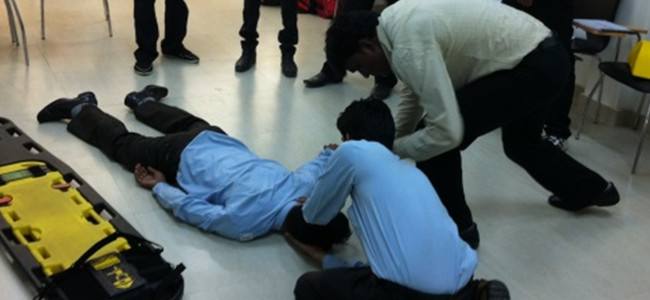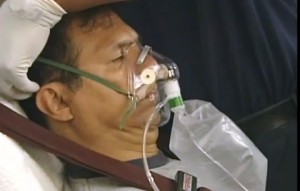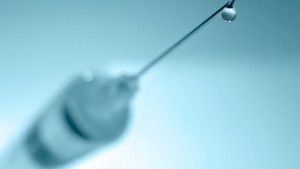
Common principles to apply in the management of medical emergencies
Author – Kapil Gupta
Author is expert in Indian Emergency management system and had worked in various segments of emergency handling situations in India
[gap height=”25″]
Introduction
Medical emergencies by their very nature can occur at any time, without warning and not necessarily in the clinical environment. It is therefore essential to be able to recognise the nature of an emergency as soon as it occurs and to have the knowledge, proficiency and confidence to be able to undertake the appropriate remedial action.
 An overview of assessment and treatment
An overview of assessment and treatment
A medical emergency can be described as a situation in which a patient’s life may be at risk.
The individual management strategies used for these conditions . However, it is also helpful to take an overview of the assessment and management of the unwell patient in order to identify principles that are common to all medical crises. This will help rationalize the actions taken and develop a common and rational approach.
Common principles to apply in the management of medical emergencies.
- Stay calm
- Shout for a colleague to help
- Is the patient conscious or unconscious?
- Reassure the conscious patient and assess their level of consciousness
- Consider the position of the patient
- Access and monitor the Airways.
- Breathing Circulation
- Would Drugs help?
- Note the time
 Assessment, monitoring and management of airway, breathing, circulation and the consideration of the administration of drugs are common elements in the care of the acutely ill patient.
Assessment, monitoring and management of airway, breathing, circulation and the consideration of the administration of drugs are common elements in the care of the acutely ill patient.
It is beneficial to review some basic physiology that is relevant to the management of medical emergencies.
This will help in the appreciation of how the cardio-vascular and the respiratory systems are intricately linked and enable all tissues and organs to remain well perfused and oxygenated. This also explains why the position of the patient is important and how drugs might be helpful.
 Oxygen, which is essential for the maintenance of human life, is inhaled into the respiratory tract and absorbed through the alveolar membranes of the lungs. The oxyhaemoglobin-rich blood is then distributed to all the tissues of the body due to the pressure generated by the heart contracting. The venous circulation returns the deoxygenated blood to the lungs, via the right side of the heart. For the cardiac output to be maintained blood needs to constantly flow in a circuit – this flow can be interrupted in a medical emergency. If blood ‘pools’ outside the central circulation (for example in the legs) then this will effectively reduce the venous return, which results in a fall in cardiac output and blood pressure
Oxygen, which is essential for the maintenance of human life, is inhaled into the respiratory tract and absorbed through the alveolar membranes of the lungs. The oxyhaemoglobin-rich blood is then distributed to all the tissues of the body due to the pressure generated by the heart contracting. The venous circulation returns the deoxygenated blood to the lungs, via the right side of the heart. For the cardiac output to be maintained blood needs to constantly flow in a circuit – this flow can be interrupted in a medical emergency. If blood ‘pools’ outside the central circulation (for example in the legs) then this will effectively reduce the venous return, which results in a fall in cardiac output and blood pressure
As a consequence of this there is a decrease in the amount of oxygenated blood reaching the brain and the resultant cerebral hypoxia (low oxygen concentration in the brain) will lead to a loss of consciousness and collapse. This change in position of the casualty, brought about by the collapse of the patient, should aid venous return and improve cerebral blood flow and allow recovery
 Venous return and cerebral blood flow are not only improved by lying the patient flat (as in a common faint) but can also be restored by the administration of drugs. An example where the circulating blood volume is reduced is anaphylaxis. In anaphylaxis, peripheral vasodilatation can occur as a consequence of the allergic reaction and the capillaries also leak fluid into the tissues. These two actions cause a reduction in circulating blood volume which can result in circulatory collapse. This can be rectified with drugs and intravenous fluid replacement. A firstline drug that can help restore the circulation is adrenaline (epinephrine); this causes vasoconstriction and stimulates the heart to beat faster and with a greater force. During an emergency it is also essential that the circulating blood is rich in oxyhaemoglobin, hence the administration of oxygen should be considered for all medical emergencies. When patients are having breathing problems due to narrowing of the bronchial airways as in asthma, inhaled salbutamol should be administered because it causes bronchodilatation. Some medical conditions will necessitate the administration of drugs to rectify a metabolic imbalance and improve the stability of the patient; glucose and glycogen are examples of this in a patient with low blood sugar.
Venous return and cerebral blood flow are not only improved by lying the patient flat (as in a common faint) but can also be restored by the administration of drugs. An example where the circulating blood volume is reduced is anaphylaxis. In anaphylaxis, peripheral vasodilatation can occur as a consequence of the allergic reaction and the capillaries also leak fluid into the tissues. These two actions cause a reduction in circulating blood volume which can result in circulatory collapse. This can be rectified with drugs and intravenous fluid replacement. A firstline drug that can help restore the circulation is adrenaline (epinephrine); this causes vasoconstriction and stimulates the heart to beat faster and with a greater force. During an emergency it is also essential that the circulating blood is rich in oxyhaemoglobin, hence the administration of oxygen should be considered for all medical emergencies. When patients are having breathing problems due to narrowing of the bronchial airways as in asthma, inhaled salbutamol should be administered because it causes bronchodilatation. Some medical conditions will necessitate the administration of drugs to rectify a metabolic imbalance and improve the stability of the patient; glucose and glycogen are examples of this in a patient with low blood sugar.
An example: medical emergencies in modern dentistry
Medical emergencies occur only rarely in the practice of dentistry. Nevertheless hygienists and therapists have a duty to ensure that they have the appropriate knowledge and skills to diagnose and manage the common medical emergencies that may be encountered in dental practice. Dental hygienists and therapists should be able to recog nise when patients are too ill to receive dental treatment and when expert assistance should be summoned. They should be familiar with the location, preparation andadministration of emergency equipment and drugs. It is the authors’ opinion that hygienists and therapists should be trained to use the following drugs: oxygen, adrenaline, glucose, glucagon, midazolam, glyceryl trinitrate aspirin and salbutamol. They should regularly update their knowledge and refine their skills by scenario training with all members of the dental team; trained colleagues are an invaluable resource in any crisis.




